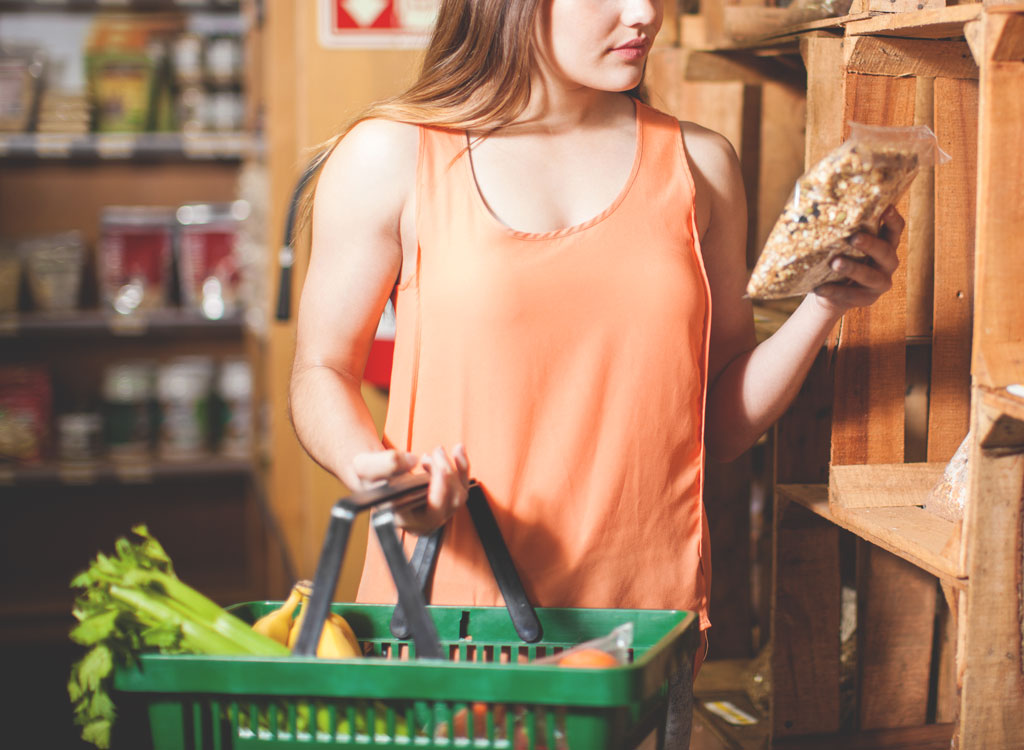What Exactly is a 'Clean' Nutrition Label?

When you're looking to eat clean, your foods' nutrition labels and ingredient lists play a significant role in determining which picks you choose to toss in your cart or leave on the supermarket shelves. Unfortunately, a so-called "clean" label isn't always easy to find—especially when you don't really know what to look for.
To help clear up the confusion surrounding clean food labels, we spoke to two registered dieticians. Here's what the experts have to say:
What defines a 'clean label'?
"I don't love the term 'clean label' because it's not regulated and can mean different things to different people," NYC-based Registered Dietitian, Natalie Rizzo, MS, RD, tells us via email.
"For some it means transparency. For others, sustainability. And for others, it's a recognizable ingredient list," Bonnie Taub-Dix, RDN, creator of BetterThanDieting.com, and author of Read It Before You Eat It: Taking You from Label to Table adds. Although there is no standard definition, Taub-Dix is at least happy with the reasoning behind manufacturers creating clean labels: "Food companies are trying to clean up their acts and give consumers better-for-you products with labels they can feel good about feeding their families."
So what exactly should you look for when reading labels?
Although "clean" labels are not a regulated term, you can still follow nutritional guidelines when reading the nutrition facts panel. We asked the experts to share their specific nutritional standards.
When it comes to scrutinizing nutrition panels, look out for sodium, carbohydrates (sugar and fiber), and protein. Taub-Dix recommends choosing a low-sodium snack, which means that a product has 140 milligrams of sodium or less per serving.
In addition, choose unsweetened snacks over those that pack in manufacturer-added sugars (such as syrups, cane sugar, honey, and the rest of these sneaky culprits).
"When choosing breads, cereals, pasta, rice, and other grain products, look for 'whole grain' or '100 percent whole wheat' as a first ingredient. Try to find foods that provide at least 5 grams of fiber as well to help you feel fuller longer and promote healthy digestion," she recommends.
Got your mind on the muscle-building macro? "When it comes to protein, an easy reference is that 7 grams of protein is equivalent to around 1 ounce of protein. So if your meal has 14 grams of protein, that's like eating 2 ounces of poultry or 2 slices of cheese," Taub-Dix says, adding that "It's important to check labels since some 'meals' could have a lot less protein than you may have been hoping to get." Just take a look at some of these 60 Worst Frozen Foods in America!
What about the ingredient list?
Once you've mastered scanning and analyzing your package's nutrition label, move on to the just-as-important ingredient list. The Center for Science in the Public Interest recommends staying away from artificial sweeteners such as aspartame, acesulfame K, saccharin, and sucralose in addition to Quorn-brand meat substitutes, food dyes, and partially hydrogenated oils (trans fats).
While a common rule of thumb states that all the ingredients should be recognizable, Rizzo reminds us that that's not always necessary. "For example, ascorbic acid is a lesser-known term for vitamin C, and you might see that on the label of a healthy food."
"The bottom line is: Don't be fooled by the flashy front of the package. Be sure to flip that bag or box over and read the ingredient list to see what you're really getting. Terms like clean labels could be tricky!" says Taub-Dix. And while you're at the grocery store, don't miss these 46 Best Supermarket Shopping Tips Ever.








